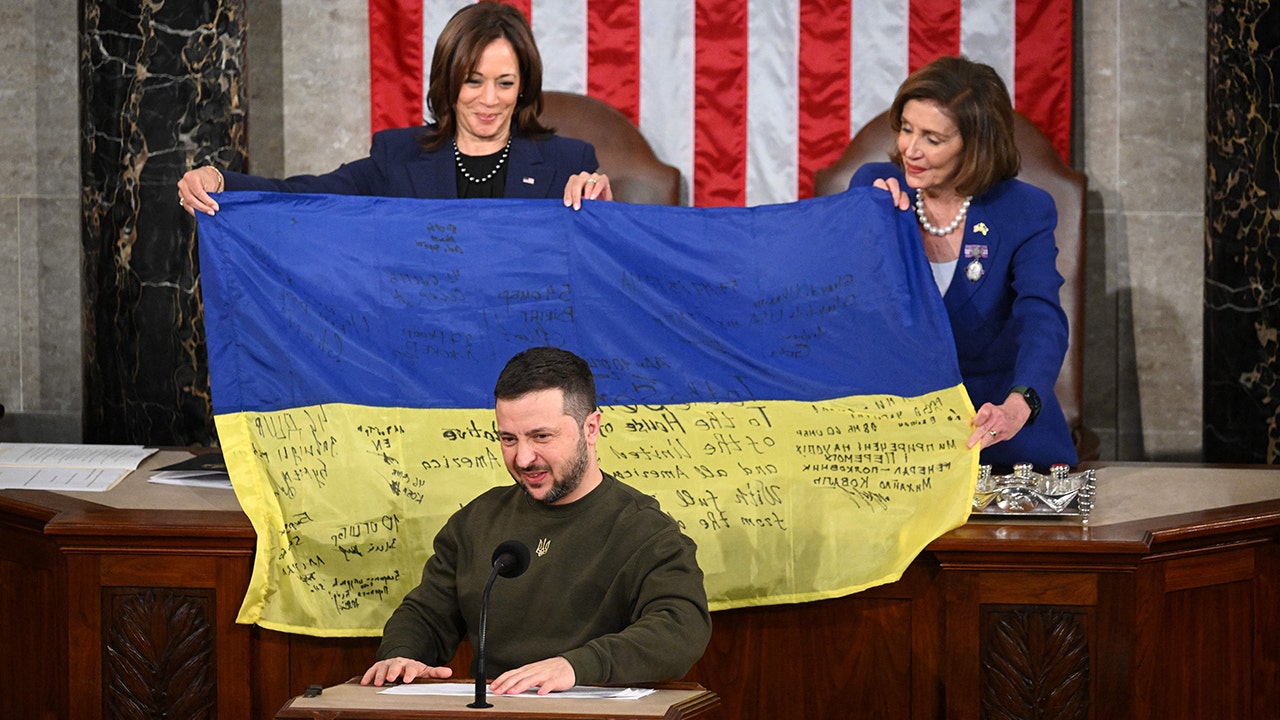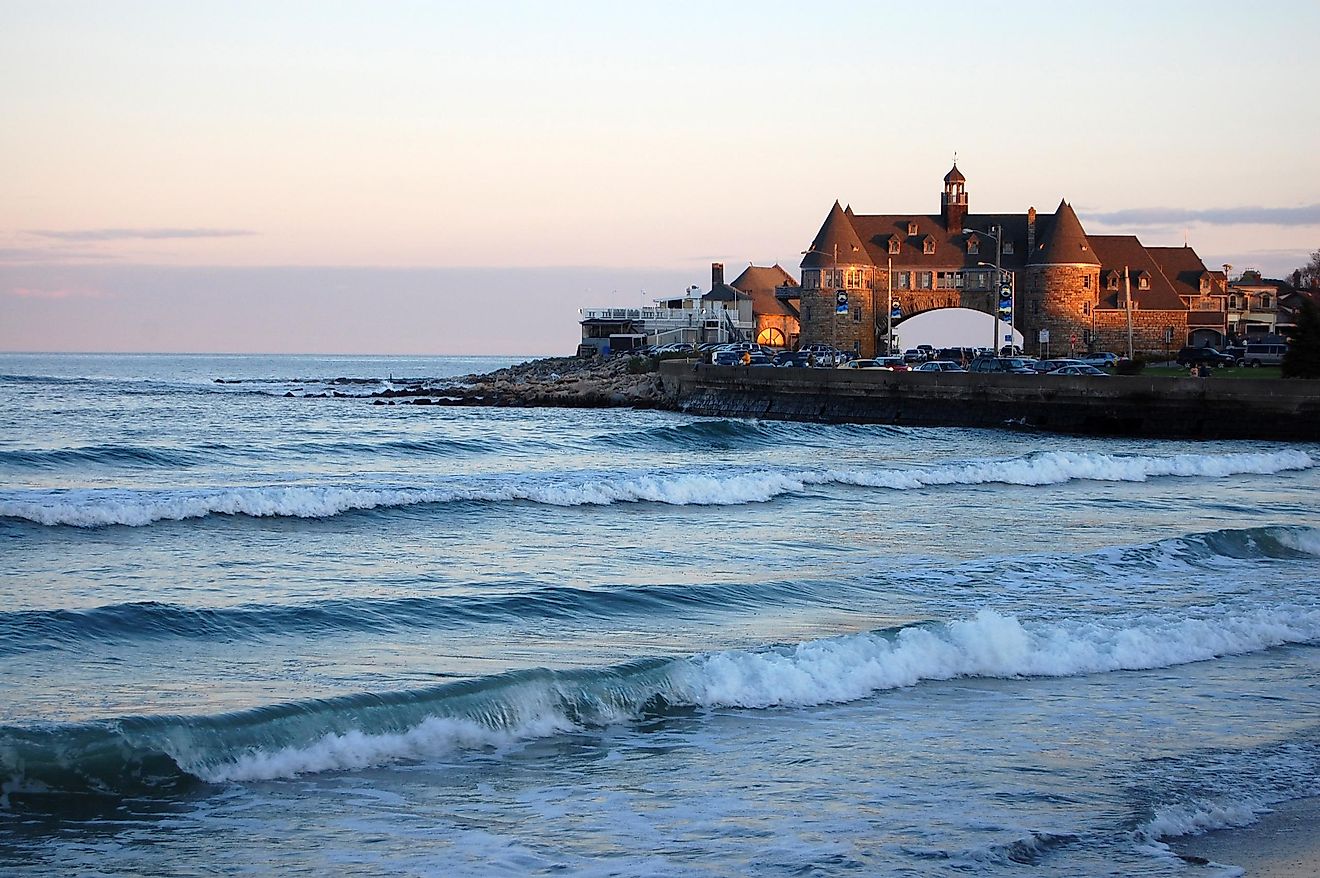Lifestyle
L.A. Affairs: I'm a divorced woman. Was I ready to be naked with a new guy?

As a newly single woman in my 50s in Los Angeles, I was terrified. I’d been married so long that the last time I’d heard the words “sexy” and “hot” was when I’d ordered sea bass in a spicy shiitake broth. I hadn’t been nipped, tucked, suctioned, filled or augmented. I figured I stood a better chance of being hit by lightning than hit on by a good-looking guy.
Understandably my girlfriends were getting weary of my “I’m going to die alone” attitude so they dragged me out to have some fun, which I assumed meant a glass of wine and a nice cheese plate, not shots of tequila in a trendy nightclub in Westlake. The last time I was in a club I was doing the Hammer Dance in parachute pants! I was in over my head. What if no one checked me out or asked me to dance. My self-esteem was already so low that I considered spending the rest of the year in bed. Maybe I just needed 11 months to reevaluate my Sleep Number and catch up on “The Bachelor.”
As it turned out, guys don’t ask you to dance anymore. They just move in on you. One guy moved in so close, it was less about dancing and more about grinding. I joked that in some countries, we were now officially married.
He didn’t get the joke, and I was not about to stay with a man with no sense of humor. I was starting to enjoy myself when fate reminded me that I was newly separated and supposed to be miserable and made me trip on an unseen step. I fell. Hard. On a concrete floor.
I was mortified. I was sure people were laughing at me, but instead, they just stepped over me on the way to the bar. Alcohol trumps everything. I got up, dusted off my pride and went back on the dance floor. I was in the middle of “raising the roof” when a pocket-sized man approached me and asked if I liked his friend. At first, I thought he was referring to his penis in the most unimaginative way, but then he gestured behind me to his actual friend — a thirtysomething tall, dark and gorgeous man. And me definitely likey!
He introduced himself in broken English as Daniel. He had just moved to Southern California from Italy to be a chef at a local hot spot. I felt like I was stepping into the pages of a Harlequin romance. Pretty soon he’d be shirtless on a horse, and I’d be behind him, holding his abs so I didn’t fall. Like I really needed a reason.
He suggested we go back to his apartment for Prosecco and more dancing, and I did what any mid-50s woman would in my situation: I threw all reason, good sense and safety concerns to the wind and blurted “Yes, God, yes!”
Daniel asked if I had a friend who could join us because the pocket-sized man had ironically big pockets and would pick up our tab and drive us in his fancy SUV. I knew convincing a girlfriend wouldn’t be easy, so I went for the jugular. I used guilt. I’d been miserable for months going on years. Did my friends really want to deny me one night of a superficial, meaningless lust connection?
After a speedy ride where I sat on my one good butt cheek, the four of us arrived at Daniel’s apartment in Agoura Hills. He popped open some bubbly and made a toast that was seductive and unintelligible, but I was suddenly in my head.
What was I doing? I wasn’t ready for sex. I wouldn’t even get naked in front of a mirror! And what about the bump on my butt from the fall that was swelling by the minute? Would it be too conspicuous if I sat on a bag of ice or frozen peas? Before I could get to the freezer, Daniel pulled me and my spiraling in for a slow dance and he started singing to me in Italian. It was corny, off-key and incredibly romantic. My girlfriend, Shauna, seeing where this might go, asked Daniel’s friend to drive her home. (That is a comedy of errors for a whole other essay.)
I didn’t say goodbye. I was too focused on Daniel’s roaming hands that were headed south for warmer regions. I yelped as he touched the bruised cheek then quickly recovered with a flirty laugh. Encouraged by my fake flirty laugh, he started undoing the buttons on my jeans. I stopped him and moved his hands up. He moved them down. I moved them up. I wondered if you could have sex with your clothes on. It had been a minute since I’d had sex with someone new. Maybe things had changed.
He took my hand and led me to the bedroom. I looked at the bed and briefly wondered if the sheets were clean. As a mom, I could get stains out of anything. My domestic reverie was cut short as he took off his shirt. I looked at his ridiculous body and I knew it was my turn. I also knew I wasn’t ready. I got into bed fully clothed, and he crawled in next to me. He pulled me in and kissed me, and I forgot all about the divorce, the heartache and the fear of being alone. I was making out with a hot Italian guy with a hematoma on my butt that was now the size of a ping-pong ball, and it was exactly what I needed. I felt hotter and sexier than any sea bass, but most important, I felt hopeful. Maybe I was going to be OK after all.
The author is a Golden Globe-winning TV comedy writer from England. She lives in Woodland Hills, but her adventures happen everywhere. She’s on Instagram: @mariaannebrown
L.A. Affairs chronicles the search for romantic love in all its glorious expressions in the L.A. area, and we want to hear your true story. We pay $400 for a published essay. Email LAAffairs@latimes.com. You can find submission guidelines here. You can find past columns here.

Lifestyle
'Long Island' renders bare the universality of longing


Sometimes a literary character’s hold on its author (and readers!) is too strong to ignore. While many sequels feel like attempts to milk a cash cow, others, like Elizabeth Strout’s Olive Kitteridge novels, bring fresh delight.
Long Island, Colm Tóibín’s heartrending follow-up to his beloved 2009 novel, Brooklyn, is the rare instance in which a sequel is every bit as good as the original.
Brooklyn, which was further popularized by the eponymous 2015 movie starring Saoirse Ronan, concerns a young Irish immigrant torn between her new home and her old one in the 1950s. Eilis Lacey, recently sent to America by her family for better prospects, returns to Enniscorthy in County Wexford, her hometown and Tóibín’s, for the funeral of her beloved older sister. Her mother, alone now that Rose is dead, doesn’t want Eilis to leave. But Eilis can’t bring herself to tell her — or anyone, including the man with whom she strikes up a romance — that she’s married to an Italian-American plumber she met at a dance in Brooklyn.
Long Island picks up Eilis’ story 25 years later, when she learns that her husband, Tony Fiorello, has impregnated one of his married clients, whose husband has categorically rejected the child. Eilis, too, adamantly refuses to have anything to do with the baby. Tony’s family, who live cheek-by-jowl in a cluster of houses in Lindenhurst, Long Island, have always viewed Eilis as an outsider. To escape the tremendous pressure from them to accept this child, Eilis decides to absent herself when the baby is due by returning to Ireland for the first time in more than 20 years. She arranges for her two teenage children, Rosella and Larry, to join her in time for the 80th birthday of the grandmother they’ve never met.
Everyone in Enniscorthy finds Eilis profoundly changed, “like a different person.” She tells no one why she’s there, including her testy mother, who lets Eilis know how insulting she finds her daughter’s patronizing attempts to fix up her home after such a long absence.
When Eilis stops in to see her former best friend, Nancy Sheridan, widowed for five years, neither woman is open about what’s going on in their lives. Nancy, not wanting to overshadow her daughter’s upcoming wedding, is keeping her impending engagement to Jim Sheridan, the pub owner whom Eilis jilted 25 years ago without an explanation, under wraps for the time being.
Ah, secrets. Tóibín, whose flawless ear captures the constant murmur of gossip that courses through small towns like Enniscorthy, is also sharply attuned to the unspoken. Such circumspection has long underpinned his fiction, including The Master and The Magician, in which he depicted the complicated lives and carefully repressed sexuality of literary titans Henry James and Thomas Mann with graceful nuance.
As always, Tóibín’s narrative restraint heightens tension and allows readers to fill in the blanks. We marvel at his skill as we watch his characters in Long Island become ensnared in the elaborate web of strategically withheld information and calculated partial truths he has them spin.
Long Island shares with The Magician and story collections such as The Empty Family a concern with the pain of the exile’s return after a long absence. But while in Brooklyn, Eilis’ relationships with two very different men separated by thousands of miles underscores the theme of an immigrant uneasily straddling two cultures, Long Island finds her more deeply rooted in America. Anchored by her American children and her bookkeeping job, Eilis’ future wouldn’t be in question if not for the situation with Tony’s baby. Her subsequent return to Ireland causes a pull not between countries but between reason and romance, moral obligations and what the heart desires. Among the many discussion-worthy questions this novel poses: Which is worse, to betray someone, or to betray your feelings?
Tóibín’s portrait of Eilis is sympathetic, both in her youthful dissembling and in her current decisiveness, which borders on intransigence. Long Island finds her not just more mature but more self-assured after decades of marriage, motherhood, and holding her own against her intrusive in-laws. Her imperatives — what she feels she has to do, whether about the unwanted baby or her future — are non-negotiable. When Jim talks about his sadness over her abrupt, hurtful parting years ago, Eilis responds without apparent remorse or sympathy: “It was the way it had to be.” But the changes she is contemplating this time involve many people and “many uncertainties,” which require time to navigate.
Tóibín handles these uncertainties and moral conundrums with exquisite delicacy, zigzagging back and forth through time to build to a devastating climax. The tragedy of this novel about the universality of longing is that, even 25 years on, Eilis, however decisive, is still not in control of her own life.
Lifestyle
The benefits of dressing up to stay in — and why they outweigh dressing up to go out

I only sleep in silk. It’s a bit of a dirty secret.
This isn’t the type of thing you want to admit to a friend, much less a stranger. It’s undemocratic. Polyester isn’t good enough for you? Rayon, viscose, all the leaps and bounds made in synthetics — don’t you believe in science?
Fine silk runs through the fingers like soft water. It drapes without hiding your lines or curves — but can, if woven with enough heft, still deliver on structure. In the right color, it is impervious to sweat. With a little Woolite — and the stomach to ignore the tsk-tsk of “dry clean only” — it’ll survive a hundred washings. Silk comforts and cocoons, so light it practically hovers. I sleep in silk. I cook in silk. I clean in silk. I live in silk — it’s all I wear when I’m at home. (And, often, an apron.) Why dress up to go out when you can dress to stay in?
Pamela wears Versace briefs and robe , Justine Clenquet earrings and necklace.

Louis Vuitton pajamas, Justine Clenquet earrings.
Like many immigrant families, the one I grew up in drew a hard line between inside clothes and outside clothes. (Or maybe it’s not about hyphens but just having some manners; as Phoebe Robinson says, “Please Don’t Sit on My Bed in Your Outside Clothes.”) Outside, the world is covered in dog s—. Plus a good deal of pollen that will have me up all night hacking. Inside, my bare feet walk on the qilim my mother “lent” me 15 years ago, and the air’s laced with cardamom from my decaf-black virgin nightcap. Inside, there’s a candle burning and a ban on overhead lighting. Inside, one rule reigns: respect the sanctity of Inside.
Pajamas, you see, aren’t just for sleeping. They’re inside clothes. This is a lesson the pandemic brought home to everyone, but for some of us it’s always been so.
The word “pajama” stems from Persian/Farsi, as I learned in my medieval Persian seminar in college after a life of speaking Farsi at home but somehow never registering the echo of this particular cognate. A compound of “pay,” or leg, and “jāma,” cloth (as in, clothes), the term first traveled to India via the Mughals, who spoke Persian at court. We’re talking the 1500s. A few centuries later — as a Dolce & Gabbana blog post on “the pyjama” also so kindly explains — the word, and corresponding style of loose pants coupled with a matching top, then went West via the Raj: colonial Brits stole the breezy unisex look from their subjects. In short, as an Iranian, I come from a long uninterrupted line of pajamas. Though probably in cotton.
When I was a kid, I also had a few nightgowns. My favorite my mother had sewn for me. Puff sleeves, peach and brown stripes. Memorialized, these days, in a snapshot of me and my childhood best friend on her family’s pullout couch, Nick at Nite on the TV.
Historically, nightgowns, opposite from pajamas, traveled from West to East. And they didn’t start out femme — in medieval Europe, men and women alike retired for the night in long, loose shirts. Today nightgowns are pretty much dead. But there was a time when Dior could dress you so good in lace and pastels it’d make you want to wear makeup to bed. Now few luxury brands bother, including Dior. (Albeit the occasional exception, like this truly wild floor-length, rhinestone-encrusted sheer getup by Dolce & Gabbana.) Probably for the same reason, I no longer have any nightgowns. First Wave feminism-slash-medieval Muslim culture has finally crashed on the shores of fashion, and women wear pants. Dresses can be restrictive. I like to lounge with one leg up.
Since those childhood days of puffs sleeves past, I’ve accrued a small collection of adult pajama sets. Window-shopping for my next set, I come back across the garment’s colonial lineage. A matching set by Dior — clearly I’m dreaming — features a generic jungle scene as the house’s take on Toile de Jouy (i.e., fussy French pastoral). Prints of “exotic” flora and fauna have become such a mainstay of luxury pajamas (see: Olivia von Halle) that we don’t even notice the history behind them. I’m not calling for a boycott, but every now and then, I like to see how the sausage gets made.
Inside you are your main audience. The joy lies in the freedom. Be extra. Go bold.
Me, I like it simple. But always in silk.

Pamela wears Agent Provocateur lingerie, Wolford stockings.

Vivienne Westwood phone purse.
My first set of silk pajamas came relatively late in life. Christmas in Fort Greene, my mid-20s. It was snowing. The kind of snow that feels like the first snow even when it isn’t, those light bright flakes that hang in the air so mournfully and beautifully you’d think you were on set for the holiday special except you can feel them melting on your chapped lips. There were so many firsts that year. My first apartment shared by an “us” that wasn’t simply financial, wasn’t me and a roommate. My first — in the form of our first — Christmas tree. (I didn’t grow up celebrating.) And, surely just as momentous, my first foray into pure silk.
Black silk with black piping. Fat black buttons, curved lapels. Long sleeves, long pants. Men’s. We’d gone Christmas shopping in the snow at the Brooklyn flea. When the scrawny guy draped over a folding chair across the stall saw me thumbing the package, he assured me that all his “girlfriends” wore them in an S, as if I needed an excuse to shop menswear and women only came in one size. He quoted 50 dollars for the set, a price that seemed at once fair and substantial. Back in the apartment that night, too lazy to iron out folds creased by time, I let more time and the wet heat of my body shake out the fabric.
Going silk is like what I imagine it felt like to step into the ’70s and burn (i.e., toss) your bras — there’s no way back. Now I have silk for every season — just a piece or two. Princesse tam tam cami and shorts in cherry red — not the skin but the flesh, which is redder. Another Princesse tam tam cami (black, bustle button detail) whose matching bottom I spent hours searching for in vain (such are sales). Thrifted and gifted to my beau before I took it back, a silk men’s tee by Cos big enough to serve as a micro-dress. Actually gifted to myself for a pandemic birthday, a classic Sleeper set in high-shine satin, the color an indulgence in itself: cream, as in farm-fresh and organic. And, I must say, way too high-maintenance. Like after I’ve done my own mani — for hours, I can hardly lift a finger without fear of effing something up.
True luxury lies in ease. As in donning that old black pajama set, day after gray rainy day, this past L.A. winter. Silk lasts. After over a decade of sitting cross-legged on the sofa in these silk pajama pants, reading or watching something; after over a decade of tossing and turning in them as I made and remade myself in cities and careers that were miles and miles apart; after over a decade of washing them, not by hand like my other silks, but by throwing them in the monstrous machine at the laundromat with regular detergent, and yes, sometimes, even machine-drying them (come out soft as a caterpillar) — after over a decade of use and abuse, I only just recently had to have a couple seams resewn. This stuff is ox-strong. Twelve years of sweat and soap, and now when the fabric ripples, black fades to gray, thick with light. You can’t buy patina like this.
Clothes are our closest homes, our first layers of shelter. I guess most folks think they’re only worth investing in when there are strangers to impress. But I want to say that being inside, being alone, is important. Maybe you’re no raja or rani, but your skin might like the touch of silk.

Pamela wears Vivienne Westwood corset, vintage purple briefs, Justine Clenquet choker.
Production: Mere Studios
Model: Pamela Holmes
Prop stylist: Gina Caravan
Makeup: Carla Perez
Photo assistant: Nicholas Mora
Prop assistant: Jessica Ayala
Mariam Rahmani is a writer and translator. Her first novel, “Liquid, A Love Story,” comes out in March from Algonquin. It takes place between L.A. and Tehran.
Lifestyle
Here are the winners of the 2024 Pulitzer Prizes

YouTube
The Pulitzer Prizes were awarded today at Columbia University, honoring American achievements in journalism, letters and drama, and music. Widely recognized as the most prestigious awards in their field within the United States, the 108th Pulitzer Prizes took place against an unusually fraught backdrop. In a statement last week, the Pulitzer Board commended student journalists covering campus protests against the war in Gaza, acknowledging they were often placing themselves “in the face of great personal and academic risk.”
Twenty-three prizes were awarded last year, with cash prizes of $15,000 going to the recipients of most of the prizes and a gold medal to the news organization that wins the Public Service Prize.
The New York Times won one of its three Pulitzers this year for its coverage of the war in Gaza. The award for International Reporting went to its staff for “wide-ranging and revelatory coverage of Hamas’ lethal attack in southern Israel on October 7, Israel’s intelligence failures and the Israeli military’s sweeping, deadly response in Gaza.” The Times also took Pulitzers in the Features and Investigative categories, the latter for a series by Hannah Dreier that revealed “the stunning reach of migrant child labor across the United States – and the corporate and governmental failures that perpetuate it.”
The Washington Post tied with the Times with three wins in the categories of Commentary, Editorial Writing and National Reporting. It shared the last with the staff at Reuters, which also won a Pulitzer for Breaking News Photography, for “raw and urgent photographs documenting the October 7th deadly attack in Israel by Hamas and the first weeks of Israel’s devastating assault on Gaza.”
And film critic Justin Chang of the Los Angeles Times won a Criticism Pulitzer for “richly evocative and genre-spanning” work “that reflects on the contemporary moviegoing experience.” Chang also contributes to numerous other publications, including NPR.
In arts and letters, the Biography award was given to two authors. The judges called Jonathan Eig’s King: A Life, a revelatory portrait of slain civil rights leader Martin Luther King, Jr. Ilyon Woo also won a Biography Pulitzer for Master Slave Husband Wife: An Epic Journey from Slavery to Freedom.
The Fiction Pulitzer went to West Virginia writer Jayne Anne Phillips for her novel Night Watch. It’s about a traumatized family in the aftermath of the Civil War. And the Nonfiction prize went to A Day in the Life of Abed Salama: Anatomy of a Jerusalem Tragedy, by Nathan Thrall. The treatment of a grieving Palestinian father was described by the judges as a “finely reported and intimate account of life under Israeli occupation of the West Bank.”
Here are the 2024 winners:
Prizes in Journalism
Public Service
“Awarded to ProPublica for the work of Joshua Kaplan, Justin Elliott, Brett Murphy, Alex Mierjeski and Kirsten Berg, groundbreaking and ambitious reporting that pierced the thick wall of secrecy surrounding the Supreme Court to reveal how a small group of politically influential billionaires wooed justices with lavish gifts and travel, pushing the Court to adopt its first code of conduct.”
Breaking News Reporting
“Awarded to the Staff of Lookout Santa Cruz, California, for its detailed and nimble community-focused coverage, over a holiday weekend, of catastrophic flooding and mudslides that displaced thousands of residents and destroyed more than 1,000 homes and businesses.”
Investigative Reporting
“Awarded to Hannah Dreier of The New York Times for a deeply reported series of stories revealing the stunning reach of migrant child labor across the United States – and the corporate and governmental failures that perpetuate it.”
Explanatory Reporting
“Awarded to Sarah Stillman of The New Yorker for a searing indictment of our legal system’s reliance on the felony murder charge and its disparate consequences, often devastating for communities of color.”
Local Reporting
“Awarded to Sarah Conway of City Bureau and Trina Reynolds-Tyler of the Invisible Institute for their investigative series on missing Black girls and women in Chicago that revealed how systemic racism and police department neglect contributed to the crisis.”
National Reporting
“Awarded to the Staff of Reuters for an eye-opening series of accountability stories focused on Elon Musk’s automobile and aerospace businesses, stories that displayed remarkable breadth and depth and provoked official probes of his companies’ practices in Europe and the United States.”
“Awarded to the Staff of The Washington Post for its sobering examination of the AR-15 semiautomatic rifle, which forced readers to reckon with the horrors wrought by the weapon often used for mass shootings in America. (Moved by the Board from the Public Service category, where it also was entered and nominated.)”
International Reporting
“Awarded to the Staff of The New York Times for its wide-ranging and revelatory coverage of Hamas’ lethal attack in southern Israel on October 7, Israel’s intelligence failures and the Israeli military’s sweeping, deadly response in Gaza.”
Feature Writing
“Awarded to Katie Engelhart, contributing writer, The New York Times for her fair-minded portrait of a family’s legal and emotional struggles during a matriarch’s progressive dementia that sensitively probes the mystery of a person’s essential self.”
Vladimir Kara-Murza in Moscow on Feb. 22, 2024.
Alexander Nemenov/AFP via Getty Images
hide caption
toggle caption
Alexander Nemenov/AFP via Getty Images

Vladimir Kara-Murza in Moscow on Feb. 22, 2024.
Alexander Nemenov/AFP via Getty Images
Commentary
“Awarded to Vladimir Kara-Murza, contributor, The Washington Post for passionate columns written at great personal risk from his prison cell, warning of the consequences of dissent in Vladimir Putin’s Russia and insisting on a democratic future for his country.”
Criticism
“Awarded to Justin Chang of the Los Angeles Times for richly evocative and genre-spanning film criticism that reflects on the contemporary moviegoing experience.”
Editorial Writing
“Awarded to David E. Hoffman of The Washington Post for a compelling and well-researched series on new technologies and the tactics authoritarian regimes use to repress dissent in the digital age, and how they can be fought.”
Illustrated Reporting and Commentary
“Awarded to Medar de la Cruz, contributor, The New Yorker for his visually-driven story set inside Rikers Island jail using bold black-and-white images that humanize the prisoners and staff through their hunger for books.”
Breaking News Photography
“Awarded to the Photography Staff of Reuters for raw and urgent photographs documenting the October 7th deadly attack in Israel by Hamas and the first weeks of Israel’s devastating assault on Gaza.”

Haitian migrants wade through water as they cross the Darien Gap from Colombia to Panama on May 9, 2023.
Ivan Valencia/AP
hide caption
toggle caption
Ivan Valencia/AP

Haitian migrants wade through water as they cross the Darien Gap from Colombia to Panama on May 9, 2023.
Ivan Valencia/AP
Feature Photography
“Awarded to the Photography Staff of Associated Press for poignant photographs chronicling unprecedented masses of migrants and their arduous journey north from Colombia to the border of the United States.”
Audio Reporting
“Awarded to the Staffs of the Invisible Institute, Chicago, and USG Audio, California, for a powerful series that revisits a Chicago hate crime from the 1990s, a fluid amalgam of memoir, community history and journalism.”
Letters and Drama Prizes
Fiction
“Awarded to Night Watch, by Jayne Anne Phillips (Knopf), a beautifully rendered novel set in West Virginia’s Trans-Allegheny Lunatic Asylum in the aftermath of the Civil War where a severely wounded Union veteran, a 12-year-old girl and her mother, long abused by a Confederate soldier, struggle to heal.”
Drama
“Awarded to Primary Trust, by Eboni Booth, a simple and elegantly crafted story of an emotionally damaged man who finds a new job, new friends and a new sense of worth, illustrating how small acts of kindness can change a person’s life and enrich an entire community.”
History
“Awarded to No Right to an Honest Living: The Struggles of Boston’s Black Workers in the Civil War Era, by Jacqueline Jones (Basic Books), a breathtakingly original reconstruction of free Black life in Boston that profoundly reshapes our understanding of the city’s abolitionist legacy and the challenging reality for its Black residents.”
Biography
“Awarded to King: A Life, by Jonathan Eig (Farrar, Straus and Giroux), a revelatory portrait of Martin Luther King, Jr. that draws on new sources to enrich our understanding of each stage of the civil rights leader’s life, exploring his strengths and weaknesses, including the self-questioning and depression that accompanied his determination.”
“Awarded to Master Slave Husband Wife: An Epic Journey from Slavery to Freedom, by Ilyon Woo (Simon & Schuster), a rich narrative of the Crafts, an enslaved couple who escaped from Georgia in 1848, with light-skinned Ellen disguised as a disabled white gentleman and William as her manservant, exploiting assumptions about race, class and disability to hide in public on their journey to the North, where they became famous abolitionists while evading bounty hunters.”
Memoir or Autobiography
“Awarded to Liliana’s Invincible Summer: A Sister’s Search for Justice, by Cristina Rivera Garza (Hogarth), a genre-bending account of the author’s 20-year-old sister, murdered by a former boyfriend, that mixes memoir, feminist investigative journalism and poetic biography stitched together with a determination born of loss.”
Poetry
“Awarded to Tripas: Poems, by Brandon Som (Georgia Review Books), a collection that deeply engages with the complexities of the poet’s dual Mexican and Chinese heritage, highlighting the dignity of his family’s working lives, creating community rather than conflict.”
General Nonfiction
“Awarded to A Day in the Life of Abed Salama: Anatomy of a Jerusalem Tragedy, by Nathan Thrall (Metropolitan Books), a finely reported and intimate account of life under Israeli occupation of the West Bank, told through a portrait of a Palestinian father whose five-year-old son dies in a fiery school bus crash when Israeli and Palestinian rescue teams are delayed by security regulations.”
Prize in Music
“Awarded to ‘Adagio (For Wadada Leo Smith)’ by Tyshawn Sorey, premiered on March 16, 2023 at Atlanta Symphony Hall, an introspective saxophone concerto with a wide range of textures presented in a slow tempo, a beautiful homage that’s quietly intense, treasuring intimacy rather than spectacle.”
Special Citations
“The Pulitzer Board awards a special citation for the late writer and critic Greg Tate, whose language – cribbed from literature, academia, popular culture and hip-hop – was as influential as the content of his ideas. His aesthetic, innovations and intellectual originality, particularly in his pioneering hip-hop criticism, continue to influence subsequent generations, especially writers and critics of color.
In recent years the Pulitzer Board has issued citations honoring journalists covering wars in Ukraine and Afghanistan. This year, the Board recognizes the courageous work of journalists and media workers covering the war in Gaza. Under horrific conditions, an extraordinary number of journalists have died in the effort to tell the stories of Palestinians and others in Gaza. This war has also claimed the lives of poets and writers among the casualties. As the Pulitzer Prizes honor categories of journalism, arts, and letters, we mark the loss of invaluable records of the human experience.”
-

 World1 week ago
World1 week agoRussian forces gained partial control of Donetsk's Ocheretyne town
-
Movie Reviews1 week ago
Challengers Movie Review
-

 Politics1 week ago
Politics1 week agoHouse Republicans brace for spring legislative sprint with one less GOP vote
-

 World1 week ago
World1 week agoAt least four dead in US after dozens of tornadoes rip through Oklahoma
-

 Politics1 week ago
Politics1 week agoDems disagree on whether party has antisemitism problem
-

 Politics1 week ago
Politics1 week agoWashington chooses its wars; Ukraine and Israel have made the cut despite opposition on right and left
-

 Politics1 week ago
Politics1 week agoAnti-Trump DA's no-show at debate leaves challenger facing off against empty podium
-

 Politics1 week ago
Politics1 week agoStefanik hits special counsel Jack Smith with ethics complaint, accuses him of election meddling
















